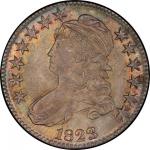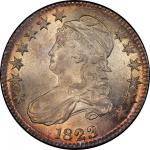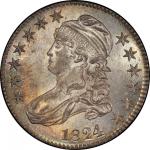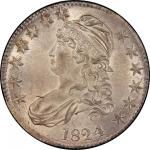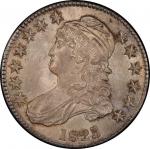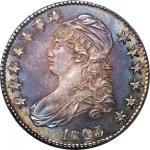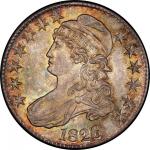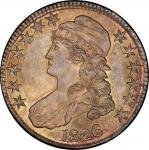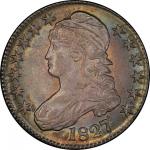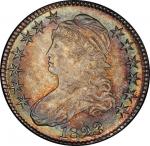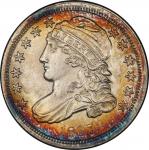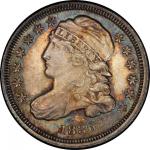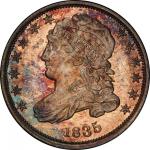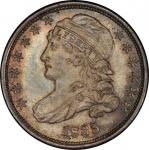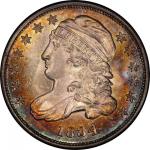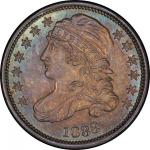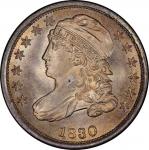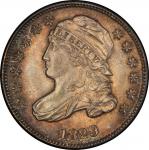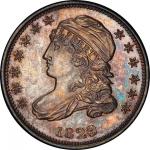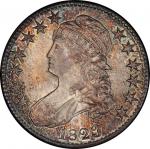“A disfigurement is between the upper and lower circle of 3, and on the right there is a V-shaped die defect projection differing from that on No. 4.” — Martin Luther Beistle, A Register of Half Dollar Die Varieties and Sub-Varieties, 1929 Inundated with extraordinary cartwheel luster, this half dollar creates a positive aesthetic impression that deepens as a well-lit examination permits full appreciation of the iridescent blues and deep amber that commingle around the peripheries. The centers of both sides are lightly toned, with deep silver gray brilliantly enhanced by clouds of gold and pale brown. The strike is firm, though some stars on the right side of the obverse lost central detail as die fatigue stretched them toward the rim. A glass finds a few small hairlines on Liberty’s cheek, a thin abrasion on her drapery and a slightly larger one on her bosom above it. On the reverse, the die clashing is still visible, though fainter in this die state. The Patched 3 is easily seen, defined by a protrusion behind the cleft in the broken 3 that sought to heal the misshapen 3 with an ad hoc graver stroke to unite the top and bottom curves. It is described as a “disfigurement” by Beistle and a “small punch” by Overton, who further explained that it was “sunk in the die at the junction of the two halves of the 3 to strengthen the connection.” Overton included this variety in his 1964 publication Early Half Dollar Die Varieties: A Supplement as O.2 and correctly discerned that it was “from the same identical die” as the Broken 3. Overton’s description of his O.2 explains the origin of this variety’s moniker: The engraver must have noticed the rather loose connection of the two half figures forming the 3 and proceeded to scoop a little chunk out of the die at this connection to obtain a stronger union, which was accomplished, but also resulted in a crude looking figure, which I refer to as the patched 3. While collected as a separate variety, and distinguished as such by both PCGS and the Guide Book of United States Coins, the Patched 3 is actually a die state, representing one of the few times a United States Mint die was used, substantially modified, and put back into production. This obverse was also married to Overton’s 1823 Reverse B to create Overton-102, the second and scarcer of the varieties to use the Patched 3. Exhibiting irresistibly beautiful toning and superb surface quality, this piece also boasts a primary variety characteristic that is easily appreciated without magnification, rendering it of interest to those who are not specifically die variety collectors. Steven Herrman identifies this as second finest seen behind the Eliasberg coin, offered in the following lot. PCGS prefers this coin, giving it a slight edge over the MS-65 Eliasberg coin. The D. Brent Pogue Collection included this coin first and acquired the Eliasberg specimen second, covering all the bases. More recently, an NGC MS-66 was offered in the April 2015 Heritage sale, matching the grade level of the Eliasberg coin when it was last offered in 2009 but seemingly not an upgrade over either of the Pogue coins. This coin and the one that follows are the only examples of the Patched 3 variety ever graded finer than MS-64 by PCGS. Only one PCGS-graded 1823 half dollar of any variety has ever received a higher grade. PCGS# 39621. NGC ID: 24FJ.


